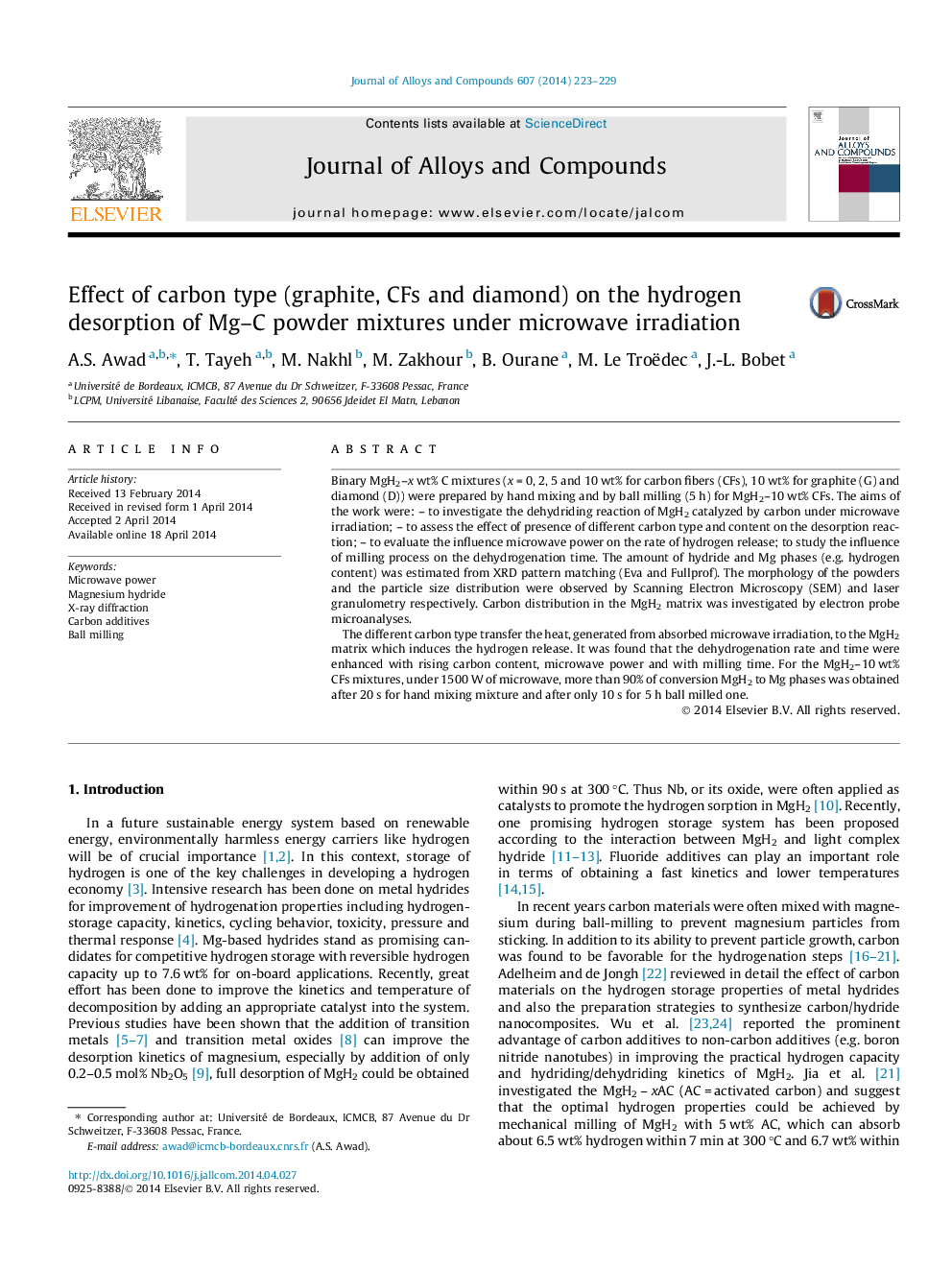| Article ID | Journal | Published Year | Pages | File Type |
|---|---|---|---|---|
| 1610915 | Journal of Alloys and Compounds | 2014 | 7 Pages |
•MgH2 + x wt% C milled mixtures desorbed hydrogen rapidly under micro waves exposition.•Carbon fibers are effective to reduce the desorption time.•Almost full desorption can be reached in 10 s.
Binary MgH2–x wt% C mixtures (x = 0, 2, 5 and 10 wt% for carbon fibers (CFs), 10 wt% for graphite (G) and diamond (D)) were prepared by hand mixing and by ball milling (5 h) for MgH2–10 wt% CFs. The aims of the work were: – to investigate the dehydriding reaction of MgH2 catalyzed by carbon under microwave irradiation; – to assess the effect of presence of different carbon type and content on the desorption reaction; – to evaluate the influence microwave power on the rate of hydrogen release; to study the influence of milling process on the dehydrogenation time. The amount of hydride and Mg phases (e.g. hydrogen content) was estimated from XRD pattern matching (Eva and Fullprof). The morphology of the powders and the particle size distribution were observed by Scanning Electron Microscopy (SEM) and laser granulometry respectively. Carbon distribution in the MgH2 matrix was investigated by electron probe microanalyses.The different carbon type transfer the heat, generated from absorbed microwave irradiation, to the MgH2 matrix which induces the hydrogen release. It was found that the dehydrogenation rate and time were enhanced with rising carbon content, microwave power and with milling time. For the MgH2–10 wt% CFs mixtures, under 1500 W of microwave, more than 90% of conversion MgH2 to Mg phases was obtained after 20 s for hand mixing mixture and after only 10 s for 5 h ball milled one.
